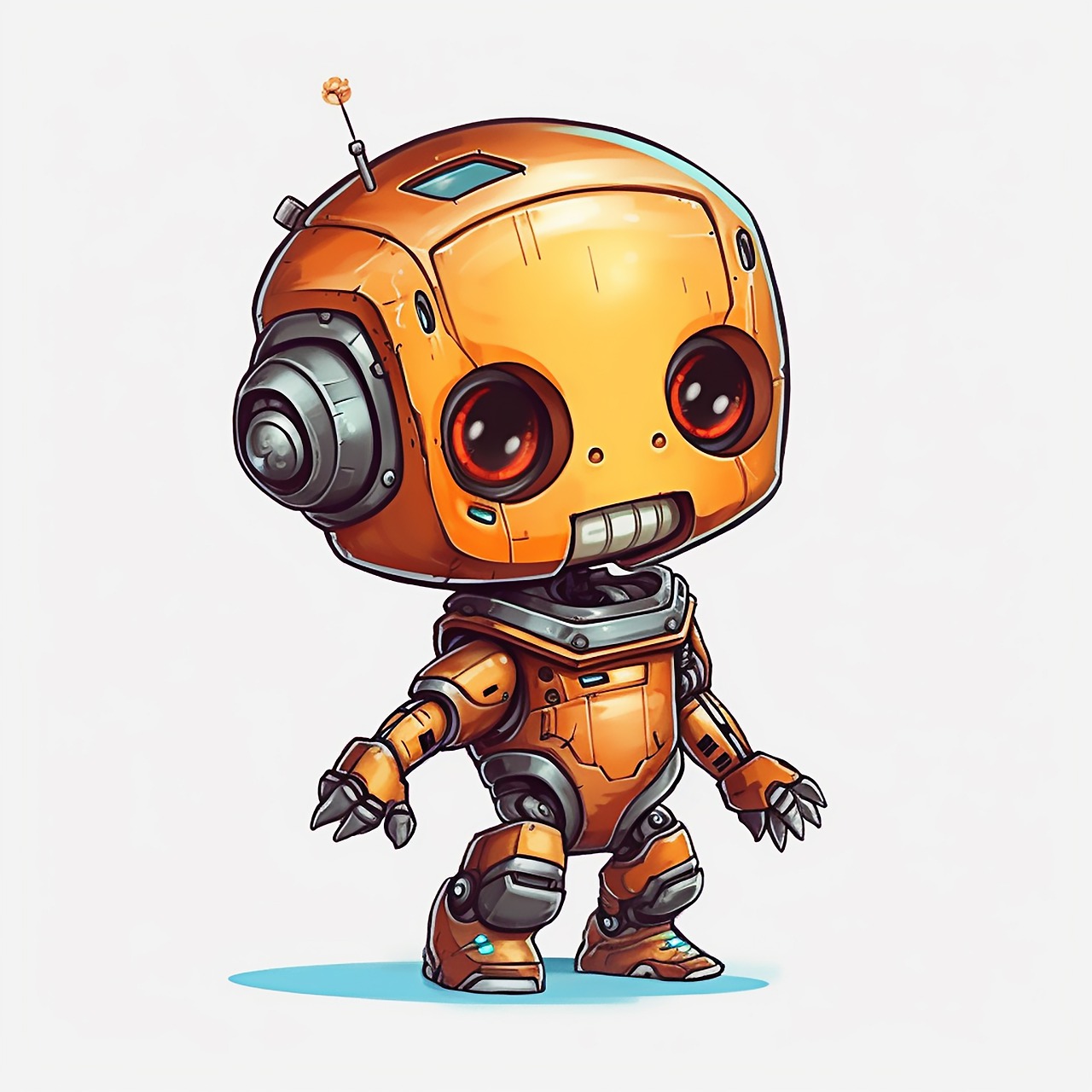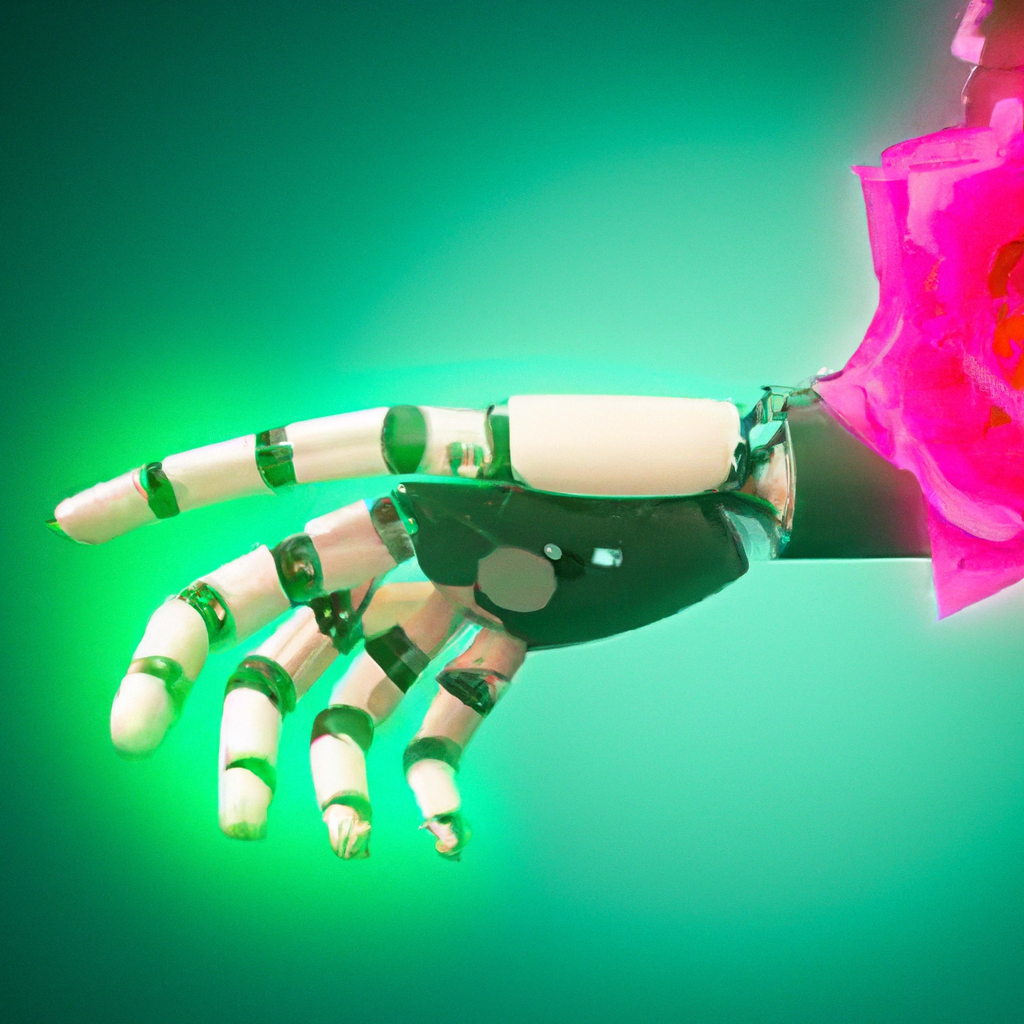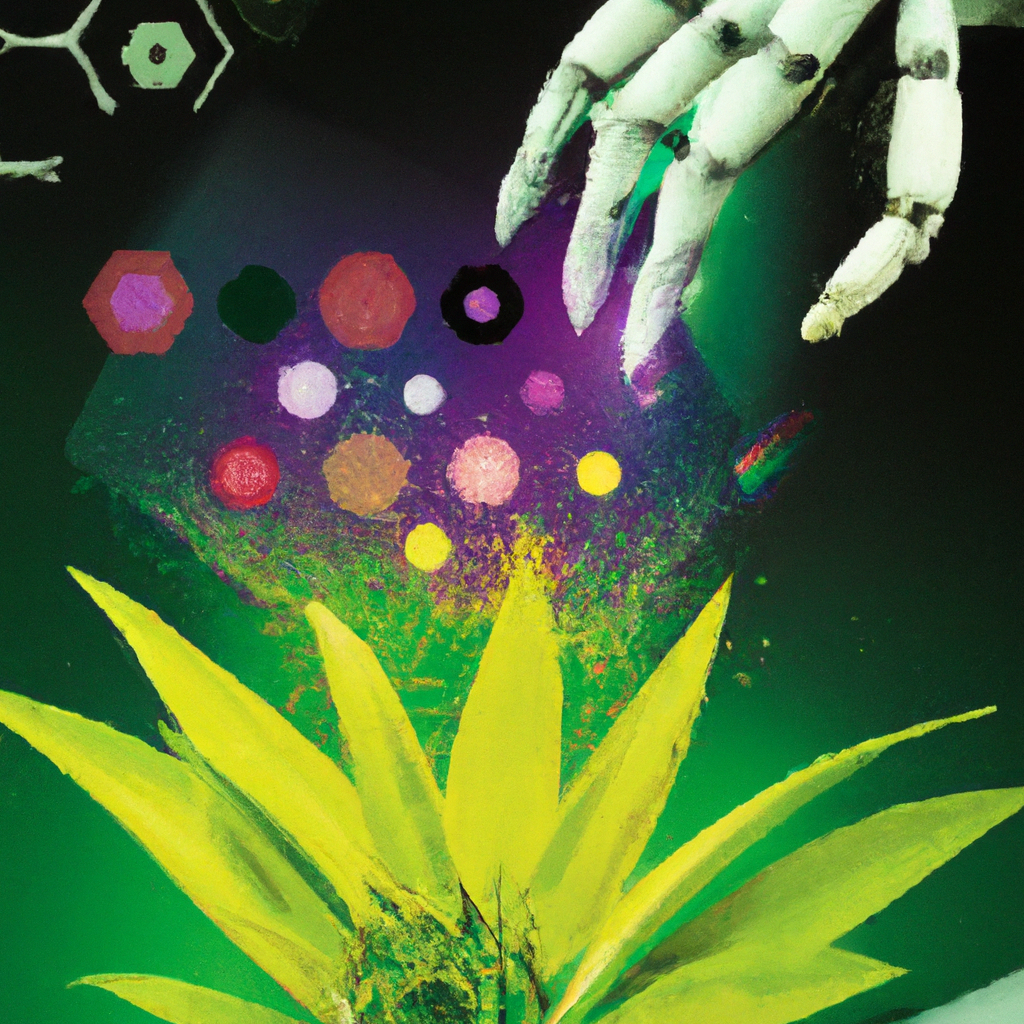Imagine if robots could mimic the intricate movements and capabilities of living organisms – that is the fascinating world of biorobotics. By merging the organic with the mechanical, researchers are unlocking new possibilities in the field of robotics. Through the integration of biological elements, such as muscles, sensors, and even neural networks, biorobotics aims to create machines that can navigate and interact with the world in a more natural and efficient manner. From bio-inspired locomotion to biohybrid robots, this article explores the groundbreaking advancements in biorobotics and the incredible potential it holds for the future.

Definition of Biorobotics
Biorobotics, in simple terms, refers to the field of science and engineering that combines biology and robotics. It involves the development and implementation of robotic systems that are inspired by or incorporate living organisms, their structures, and their functions. The ultimate goal of biorobotics is to merge the organic and mechanical worlds, creating innovative solutions that not only mimic biology but also enhance our understanding of it.
Explanation of Biorobotics
Biorobotics is an interdisciplinary field that borrows concepts from various areas such as biology, robotics, engineering, and computer science. By drawing inspiration from the natural world, biorobotics aims to replicate and understand the intricate mechanisms and behaviors found in living organisms. This knowledge can then be used to develop advanced technological systems that have the potential to revolutionize multiple industries.
Origins and Development of Biorobotics
The origins of biorobotics can be traced back to the early 20th century when scientists began exploring the possibilities of merging biology and machines. However, it was not until the late 20th century that substantial progress was made in this field. One significant milestone was the development of soft robotics, which paved the way for the creation of robots with flexible and compliant structures resembling biological tissues. This breakthrough opened new avenues for research in biorobotics, leading to the emergence of bio-inspired locomotion, biomimetic sensors, and other exciting developments.
Artificial Intelligence versus Biorobotics
While artificial intelligence (AI) and biorobotics share common goals of creating intelligent systems, there are notable differences between the two fields. AI focuses on developing algorithms and software that mimic human intelligence, whereas biorobotics aims to create physical systems that imitate biological processes. Biorobotics goes beyond software and pursues the integration of living tissues and artificial components, aiming for a greater synergy between humans and machines.
Main Goals of Biorobotics
Merging Biological and Robotic Systems
The primary objective of biorobotics is to bridge the gap between biology and robotics, merging the best of both worlds. This integration of biological and artificial systems has the potential to yield remarkable breakthroughs in various fields, including healthcare, prosthetics, and rehabilitation. By combining the adaptability and resilience of living organisms with the precision and efficiency of robotics, biorobotics envisions a future where machines seamlessly interact and synergize with the human body.
Understanding Biological Systems Better
Another important goal of biorobotics is to deepen our understanding of biological systems. By attempting to replicate and simulate biological processes, scientists and engineers gain invaluable insights into the complexities and intricacies of living organisms. This enhanced understanding not only sheds light on the fundamental workings of life but also opens up new avenues for medical advancements and bioengineering.
Advancements in Medical and Clinical Applications
Biorobotics has significant implications in the medical and clinical domains. By developing robotic systems that can interact with biological tissues and organs, researchers can improve surgical procedures, diagnosis, and treatment options. Robotic surgery, for example, enables minimally invasive procedures, reducing patient trauma and speeding up recovery times. Furthermore, biorobotics plays a crucial role in prosthetics and assistive devices, offering enhanced mobility and functionality to individuals with disabilities.
Creating Artificial Tissue and Organs
Designing Biohybrid Devices
One of the key areas of focus in biorobotics is the design and development of biohybrid devices. These devices combine biological components, such as living cells or tissues, with synthetic materials to create functional systems that mimic or augment natural functions. By leveraging the strengths of both biological and artificial elements, biohybrid devices hold promise in various applications, including tissue engineering, organ transplantation, and drug delivery systems.
Implementation and Use of Bioprinting
Bioprinting is a cutting-edge technology that enables the fabrication of three-dimensional structures using living cells as building blocks. It allows scientists and researchers to create intricate tissues and organs layer by layer, with the potential to overcome the limitations of traditional transplantation methods. Bioprinting holds great promise for personalized medicine, as it has the potential to revolutionize organ transplantation and reduce the need for donor organs.
Challenges and Potential Solutions
Despite the remarkable advancements in creating artificial tissue and organs, biorobotics still faces significant challenges. Some of the obstacles include ensuring the long-term viability and functionality of biohybrid devices, improving the integration between the biological and artificial components, and overcoming regulatory and ethical concerns. However, with ongoing research and technological advancements, these challenges can be addressed, paving the way for a future where artificial tissues and organs become a viable option for patients worldwide.
Biorobotics in Medical Procedures
Robotic Surgery and Minimally Invasive Procedures
Robotic-assisted surgery has revolutionized the field of medicine, allowing for precise and minimally invasive procedures. Surgeons can now utilize robotic systems to perform complex surgeries with enhanced dexterity and accuracy. The use of biorobotic systems in surgical procedures has several advantages, including reduced blood loss, faster recovery times, and improved patient outcomes. As technology continues to advance, robotic surgery is likely to become more commonplace, benefiting patients and healthcare professionals alike.
Assistive and Rehabilitation Robotics
Biorobotics has also made significant contributions to the field of assistive and rehabilitation robotics. These systems aid individuals with physical disabilities in regaining independence and improving their quality of life. For instance, exoskeletons, which are wearable robotic devices, can assist individuals with mobility impairments in walking and performing daily tasks. These innovations not only enhance physical capabilities but also contribute to the psychological well-being and social integration of individuals with disabilities.
Integrating Biosensors in Robotic Surgery
Biorobotics has facilitated the integration of biosensors into surgical procedures, enabling real-time monitoring of vital signs and patient conditions. Biosensors incorporated into robotic surgical instruments can provide surgeons with valuable information, such as tissue oxygenation levels or organ function. This data enhances surgical precision and safety, reducing the risk of complications during complex procedures. The integration of biosensors in biorobotics serves as a testament to the potential of merging biology and robotics in improving patient care.

Humanoid Robots and Biorobotics
Development of Human-like Robots
The development of humanoid robots has been a significant area of research in biorobotics. These robots aim to replicate human-like characteristics, both in terms of appearance and functionality. By mimicking human movements, expressions, and interactions, humanoid robots hold promise in areas such as social robotics, human-robot collaboration, and entertainment. The development of advanced humanoid robots paves the way for a future where humans and machines can seamlessly interact and cooperate.
Role of Biorobotics in Achieving Realistic Movements
Biorobotics plays a critical role in achieving realistic movements in humanoid robots. By studying human biomechanics and employing bio-inspired design principles, researchers can create robots that move and interact with the environment in a more natural and human-like manner. This not only enhances the robot’s usability in various applications but also bridges the gap between humans and machines, facilitating effective communication and collaboration.
Significance of Studying Human and Animal Biomechanics
Studying human and animal biomechanics is essential in biorobotics to gain insights into the principles underlying efficient and adaptive locomotion. By analyzing the movement patterns and mechanics of living organisms, researchers can develop robotic systems that replicate and improve upon these capabilities. Understanding biomechanics also helps in designing safer and more ergonomic human-machine interfaces, ensuring that machines interact harmoniously with human users.
Biorobotics in Research and Academia
Role of Biorobotics in Scientific Research
Biorobotics has become an integral part of scientific research, facilitating the study of biological systems and phenomena. Robotic models and simulations allow researchers to conduct experiments and gather data in controlled environments. These models help in understanding complex biological processes, such as locomotion, sensory perception, or collective behaviors. Furthermore, biorobotics enables the development of novel experimental approaches that would otherwise be impossible or impractical to achieve using traditional methods.
Academic Programs and Courses on Biorobotics
With the growing prominence of biorobotics, academic programs and courses dedicated to this field have emerged. These programs provide students with a comprehensive understanding of the principles and methodologies of biorobotics, equipping them with the necessary skills to tackle complex challenges. Biorobotics courses cover topics such as bio-inspired robotics, biomechanics, computational modeling, and ethics. Graduates of these programs can pursue careers in research, academia, or industry, contributing to the further advancement of biorobotics.
Key Research Institutions in The Field
Numerous research institutions worldwide are at the forefront of biorobotics, pioneering groundbreaking advancements in the field. Institutions such as the Massachusetts Institute of Technology (MIT), the Wyss Institute for Biologically Inspired Engineering, and the German Aerospace Center (DLR) have been instrumental in advancing biorobotics research. Their cutting-edge facilities, interdisciplinary collaborations, and dedicated teams of researchers have resulted in significant breakthroughs, pushing the boundaries of what is possible in this exciting field.

Ethics and Biorobotics
Ethical Concerns Surrounding Biorobotics
The emergence of biorobotics raises ethical concerns that must be addressed. One significant concern is the potential misuse of biorobotic technologies, such as autonomous weapons or invasive surveillance systems. Additionally, there are ethical implications related to the use of biological materials, such as human cells or tissues, in the development of biohybrid devices. Striking a balance between progress and responsible use of biorobotics is crucial to ensure that ethical considerations are given due importance.
Regulations and Policies Affecting Biorobotics
Given the ethical considerations, regulations and policies play a vital role in governing the development and deployment of biorobotic technologies. Regulatory frameworks are necessary to address safety concerns, ensure ethical practices, and protect the rights and welfare of individuals involved in biorobotics research and applications. Governments and international bodies need to collaborate to develop comprehensive and up-to-date regulations that promote the responsible use of biorobotics while fostering innovation and societal benefit.
Fostering Responsible Innovation in Biorobotics
To foster responsible innovation, collaboration between researchers, policymakers, and the public is crucial. Open dialogues and discussions focused on the ethical implications of biorobotics can help create awareness and ensure that public concerns are taken into account. Incorporating ethical training and considerations into biorobotics education and research programs is also essential. By engaging in responsible practices and involving stakeholders, the biorobotics community can create a more sustainable and ethical future.
Future of Biorobotics
Emerging Trends in Biorobotics
The future of biorobotics is filled with exciting possibilities. Emerging trends in the field include the development of more complex and autonomous biohybrid devices, advancements in artificial intelligence and machine learning algorithms for biorobotic systems, and the integration of nanotechnology and robotics for precise manipulation at the cellular level. Furthermore, the convergence of biorobotics with other emerging fields such as nanorobotics and synthetic biology opens up new frontiers for exploration and innovation.
Potential Future Applications of Biorobotics
The potential applications of biorobotics are vast and varied. In the medical field, biorobotics could lead to significant advancements in regenerative medicine, personalized healthcare, and neuroprosthetics. In industry and manufacturing, biorobotics has the potential to enhance automation and improve human-robot collaboration. Furthermore, the development of social robots could revolutionize various industries, including elderly care, education, and entertainment. These potential applications highlight the transformative impact that biorobotics could have on society.
Challenges and Opportunities Moving Forward
Moving forward, biorobotics faces both challenges and opportunities. Overcoming technical hurdles such as power supply, compatibility between biological and artificial components, and ensuring long-term stability and efficacy of biohybrid systems are key challenges to address. Additionally, addressing societal and ethical concerns while promoting responsible innovation will be paramount. However, these challenges present opportunities for interdisciplinary collaborations, innovation, and exploration, paving the way for biorobotics to foster positive change and improve the quality of life for individuals worldwide.
Case Studies in Biorobotics
Noteworthy Biorobotic Innovations
Several noteworthy biorobotic innovations have had a profound impact on various fields. The development of the da Vinci Surgical System, for instance, revolutionized robotic surgery, enabling precise, minimally invasive procedures. In the field of prosthetics, the development of advanced bionic limbs equipped with sensory feedback and natural control mechanisms has significantly improved the quality of life for amputees. These innovations serve as inspiring examples of how biorobotics can push the boundaries of what is possible, offering solutions to real-world challenges.
Success Stories in Biorobotic Application
Biorobotics has been successfully applied in various domains to address critical challenges. In marine research, bio-inspired underwater robots have allowed scientists to explore and study the intricate ecosystems of the oceans. In disaster response, robotic search and rescue systems have helped locate and assist survivors in hazardous environments. These success stories demonstrate the potential of biorobotics to solve complex problems, improving our understanding of the natural world and enabling us to mitigate crises more effectively.
Lessons Learned from Failed Attempts
While there have been many success stories in biorobotics, failures and challenges have also been encountered along the way. Failed attempts in biorobotics provide valuable lessons for researchers and engineers. For example, early robotic mimics of human movements often fell short due to limitations in materials, actuation, and control systems. These failures paved the way for advancements in materials science, computer vision, and control algorithms, leading to more robust and capable biorobotic systems. Failure is an integral part of the iterative process of innovation, guiding researchers towards better solutions and approaches.
Conclusion: Merging The Organic With The Mechanical
Encapsulation of the Article
In conclusion, biorobotics represents a groundbreaking field that merges biology and robotics, leveraging the strengths of both to create innovative solutions. It involves the design and development of biohybrid devices, the exploration of medical applications, the study of humanoid robots, and research in academia. Biorobotics holds immense potential to enhance our understanding of biology, revolutionize medical procedures, and drive advancements in various industries. However, it also raises ethical concerns that must be addressed, while regulations and responsible practices are crucial for fostering innovation. The future of biorobotics is promising, with emerging trends and potential applications offering exciting opportunities for transformative change.
Reiteration of the Importance of Biorobotics in Modern World
Biorobotics is of utmost importance in the modern world, as it enables us to combine the best of biology and robotics to tackle complex challenges. By integrating living organisms and artificial systems, biorobotics has the potential to revolutionize healthcare, industry, and scientific research. The advancements in robotic surgery, assistive devices, and biohybrid systems offer tangible benefits to individuals and society. Furthermore, the study of human and animal biomechanics provides us with insights into the fundamental principles governing efficient movement. Biorobotics is a testament to the power of merging the organic with the mechanical, offering innovative solutions for a better future.
Final Thoughts on the Future Progress of Biorobotics
Looking ahead, the future progress of biorobotics is bright and promising. As technology continues to advance, we can expect to witness remarkable breakthroughs in the field. The integration of artificial intelligence, nanorobotics, and synthetic biology with biorobotics holds immense potential for transformative innovations. However, it is crucial to address challenges related to long-term stability, compatibility, and ethical implications to ensure responsible progress. By fostering interdisciplinary collaborations, public engagement, and responsible practices, we can shape the future of biorobotics in a way that brings positive outcomes and improves the quality of life for individuals worldwide. Biorobotics truly represents the merging of the organic with the mechanical, offering a glimpse into a future where humans and machines work together harmoniously.










